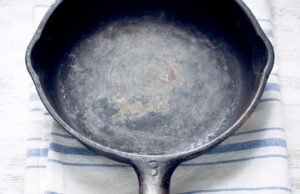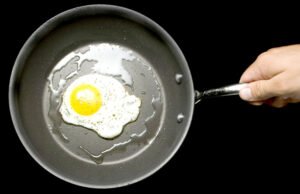As an Amazon Associate, I earn from qualifying purchases at no extra cost to you.
How to Clean Dishwasher with Citric Acid for Sparkling Results
Have you ever noticed your dishwasher leaving spots or a weird smell? It can be frustrating, right? I tried many cleaners before, but citric acid worked like magic. It’s simple, cheap, and surprisingly effective. In this article, I’ll show you exactly how to clean dishwasher with citric acid so it looks and smells fresh again.
First, remove leftover food and debris from the filter. Then, sprinkle citric acid in the detergent tray or bottom of the dishwasher. Run a hot cycle without dishes to remove limescale, grease, and odor. Wipe down the door edges and racks afterward for extra shine. Repeat monthly or as needed. You’ll enjoy sparkling dishes, better-smelling appliances, and a longer dishwasher lifespan.
Why Citric Acid Works Wonders in Dishwashers
Citric acid is naturally found in lemons, so it’s gentle yet powerful. When I first learned about it, I was surprised how effective it is. It breaks down hard water deposits and grease that regular detergents leave behind. Plus, it doesn’t leave a chemical smell, which is a huge bonus.
Many people forget that dishwashers build up mineral deposits over time. Even if your dishwasher looks clean, white or gray residue can hide in corners. Citric acid reacts with these deposits and dissolves them completely. I tried it once on a stubborn ring inside the tub, and it vanished in one cycle.
Another great thing is that it’s safe for most dishwasher parts. Stainless steel, plastic, and glass can handle citric acid without damage. I often sprinkle a little extra in older machines, just to keep them in top shape. You might wonder if it’s enough—yes, a small amount works wonders.
Finally, using citric acid is eco-friendly. Unlike harsh chemicals, it won’t pollute water or damage the environment. Plus, it’s cheap—you can buy a bag that lasts months. Small change, big impact.
- Citric acid dissolves mineral deposits and grease
- Safe for most dishwasher materials
- Eco-friendly and inexpensive
- Removes odor without chemicals
Preparing Your Dishwasher for a Citric Acid Clean
Before using citric acid, preparation is key. Start by removing all dishes and utensils. I always check the racks for crumbs and food particles first. It makes a big difference because citric acid works best on a mostly empty dishwasher.
Next, clean the filter carefully. The filter catches leftover food that can block water flow. I usually rinse mine under warm water and gently scrub it. If ignored, the filter can make your dishwasher smell, even with citric acid.
Check spray arms too. They sometimes get clogged with hard water deposits. Using a toothpick or small brush, I poke out any holes to let water flow freely. This ensures citric acid reaches every corner and cleans evenly.
Finally, wipe the door edges and rubber seals. I often forget these spots, and they accumulate grime. A damp cloth works well, and you can sprinkle a tiny bit of citric acid for extra cleaning power. You’ll notice a big difference next cycle.
- Remove dishes and utensils
- Clean the filter thoroughly
- Clear spray arm holes
- Wipe door edges and rubber seals
How to Apply Citric Acid Properly
Applying citric acid is surprisingly simple. I usually sprinkle about two tablespoons directly into the detergent tray. Some people prefer the bottom of the dishwasher—it works either way. The goal is to let citric acid dissolve in hot water and reach all surfaces.
Make sure to run a hot cycle without any dishes. I always choose the longest and hottest cycle, so citric acid can work fully. You might hear water swishing and see a little fizz—that’s normal. It shows the acid is breaking down deposits.
For extra tough buildup, I sometimes sprinkle a little on the stubborn spots inside the tub. I let the dishwasher sit for 10–15 minutes before starting. It helps soften hard limescale. You can also repeat the process monthly for regular maintenance.
Lastly, don’t forget the final wipe-down. Once the cycle ends, I open the door and let it air dry. Then I wipe racks, edges, and corners with a damp cloth. The dishwasher smells fresh, and you’ll see a noticeable shine on the walls and racks.
- Sprinkle 2 tablespoons in detergent tray or bottom
- Run the hottest, longest cycle without dishes
- Apply extra on stubborn deposits if needed
- Wipe racks and edges after cleaning
Removing Odors and Stains Effectively
Dishwashers often develop weird smells over time. I noticed mine sometimes smelled musty, especially after washing pasta or fish. Citric acid is perfect for neutralizing odors naturally. It breaks down grease that traps smells.
For stains, citric acid works like a gentle scrub. I sometimes make a paste with water and apply it to the tub or door. Let it sit 15 minutes, then run a hot cycle. I’ve seen yellowish stains vanish almost completely.
If your dishwasher has lingering odors, try adding a cup of white vinegar along with citric acid. It’s safe and boosts cleaning power. I do this occasionally when my dishwasher is overdue for a deep clean. It’s surprising how fresh it smells afterward.
Regular maintenance also prevents odors. A quick wipe of the door seals and filter every week keeps smells away. Small habits like this make your dishwasher more pleasant to use.
- Citric acid neutralizes odors
- Paste form helps remove stains
- Combine with vinegar for extra cleaning
- Regular wipes prevent future smells
Caring for Dishwasher Parts with Citric Acid
Citric acid is gentle on dishwasher parts, but proper care ensures longevity. I always check plastic racks and steel parts for damage first. Avoid using too much acid at once, as it can corrode older seals.
Spray arms are another focus. I remove them occasionally and soak in a mild citric acid solution. It loosens mineral deposits and keeps water flow strong. I notice dishes come out cleaner when I do this monthly.
The rubber gaskets can collect grime, too. I dip a cloth in a weak citric acid solution and wipe around the edges. It keeps seals soft and prevents cracks over time. I like to do this alongside cleaning the filter.
Finally, don’t forget the detergent dispenser. Citric acid helps dissolve residue inside it. A clean dispenser releases detergent evenly for every wash. I always do this after every few citric acid cycles to keep the dishwasher working well.
- Check plastic racks and steel parts
- Soak spray arms occasionally
- Wipe rubber gaskets with weak solution
- Clean detergent dispenser regularly
Maintaining a Sparkling Dishwasher Long-Term
Cleaning once is great, but consistency matters. I keep a small bag of citric acid handy and sprinkle it monthly. This prevents limescale and keeps the dishwasher fresh. You’ll save time and avoid stubborn buildup.
I also pay attention to water hardness. If you live in a hard water area, I run a citric acid cycle more often. I notice less white residue on dishes and a smoother operation overall. Small adjustments make a big difference.
Another tip is to leave the door slightly open after each wash. It lets moisture escape and prevents mold. I pair this with a quick wipe of the filter and door edges. Over time, it makes the dishwasher easier to maintain.
Finally, track odors and stains. Whenever I notice a smell or residue, I do a quick citric acid clean. It’s easier than waiting for buildup. Your dishwasher stays sparkling, smells fresh, and lasts longer.
- Use citric acid monthly for maintenance
- Adjust frequency for hard water areas
- Leave the door slightly open after wash
- Clean when odors or residue appear
Final Thoughts
Cleaning your dishwasher with citric acid is simple, effective, and safe. It removes buildup, odors, and stains naturally. Regular use keeps your appliance fresh, sparkling, and longer-lasting. A few small habits, like wiping filters and edges, make a huge difference. You’ll enjoy cleaner dishes and a happier kitchen with minimal effort.
Quick Guide Table
| Task | How to Do It | Tip |
|---|---|---|
| Remove dishes | Take out all plates, cups, and utensils | Check racks for crumbs |
| Clean filter | Rinse under warm water and scrub gently | Do weekly for best results |
| Clear spray arms | Use toothpick or brush to unclog holes | Helps citric acid reach all areas |
| Apply citric acid | 2 tablespoons in tray or bottom | Extra on stubborn spots |
| Run hot cycle | Longest, hottest cycle without dishes | Watch fizzing action |
| Wipe surfaces | Damp cloth for racks, edges, seals | Do after cycle for shine |
| Optional vinegar | Add 1 cup for strong odors | Safe with citric acid |
| Maintain monthly | Sprinkle citric acid regularly | Adjust for hard water |
Frequently Asked Questions (FAQs)
Is it safe to use citric acid every month?
Yes, it’s safe to use monthly for most dishwashers. Citric acid is gentle and naturally dissolves limescale without harming steel, plastic, or glass. I usually sprinkle a small amount each month, and my dishwasher stays spotless. Over time, it prevents buildup, odors, and stains. If your dishwasher is older, use a slightly smaller amount first. It works effectively while keeping parts in good shape. Monthly cleaning is also cost-effective because a single bag lasts for many months.
Can citric acid remove tough stains?
Yes, citric acid works well on stubborn stains. I sometimes make a paste with a little water and apply it directly to the discolored area. Let it sit for 10–15 minutes, then run a hot cycle. You’ll see most yellowish or grayish stains disappear. For extra stubborn marks, repeat the process or add a cup of vinegar. It’s a safe, chemical-free way to keep your dishwasher looking like new.
Do I need to remove the filter first?
Absolutely, removing the filter makes a big difference. Food particles and crumbs can block water flow, reducing citric acid effectiveness. I rinse the filter under warm water and scrub lightly before cleaning the rest of the dishwasher. This simple step ensures that citric acid reaches all surfaces and removes buildup evenly. Neglecting the filter can leave odors and residue behind.
Is it okay to use citric acid on all dishwasher types?
For most dishwashers, yes, citric acid is safe. Stainless steel, plastic, and glass can handle it without damage. However, for very old machines or certain seals, use a smaller amount first to test. I always check manufacturer instructions if unsure. Citric acid is natural and eco-friendly, making it a safe choice for almost every dishwasher model.
Can I combine citric acid with vinegar?
Yes, combining citric acid with vinegar enhances cleaning. Citric acid dissolves minerals, while vinegar neutralizes odors. I often add a cup of vinegar with citric acid for extra tough buildup. It’s safe and effective, but don’t mix too much at once. The combination keeps the dishwasher sparkling and smelling fresh, even after heavy use.
Do I need to wipe the door edges after cleaning?
Yes, wiping the edges helps remove residue and prevent smells. I use a damp cloth on rubber seals and corners after each cycle. It keeps grime from building up and prolongs the life of the seals. Even with citric acid, these spots can hold moisture and particles. A quick wipe is simple but makes a big difference.
Is citric acid better than commercial cleaners?
It often is. Citric acid is natural, cheap, and effective at removing limescale, grease, and odor. I’ve tried commercial cleaners, but citric acid works just as well without harsh chemicals. Plus, it’s safer for kids, pets, and the environment. For regular maintenance, I prefer citric acid because it’s gentle yet powerful.
Can citric acid prevent future buildup?
Yes, regular use prevents future mineral deposits and stains. I sprinkle it monthly and notice less residue on dishes and walls. It keeps the dishwasher running efficiently and reduces odors. Over time, this small habit makes a big difference in performance. You’ll spend less time scrubbing and more time enjoying clean dishes.




